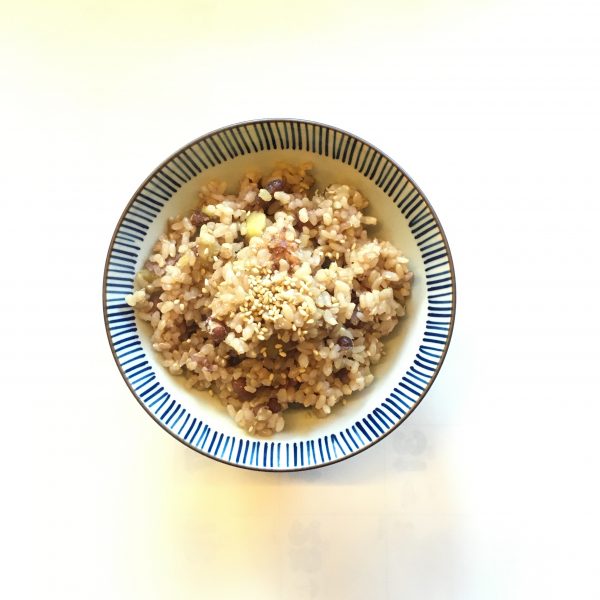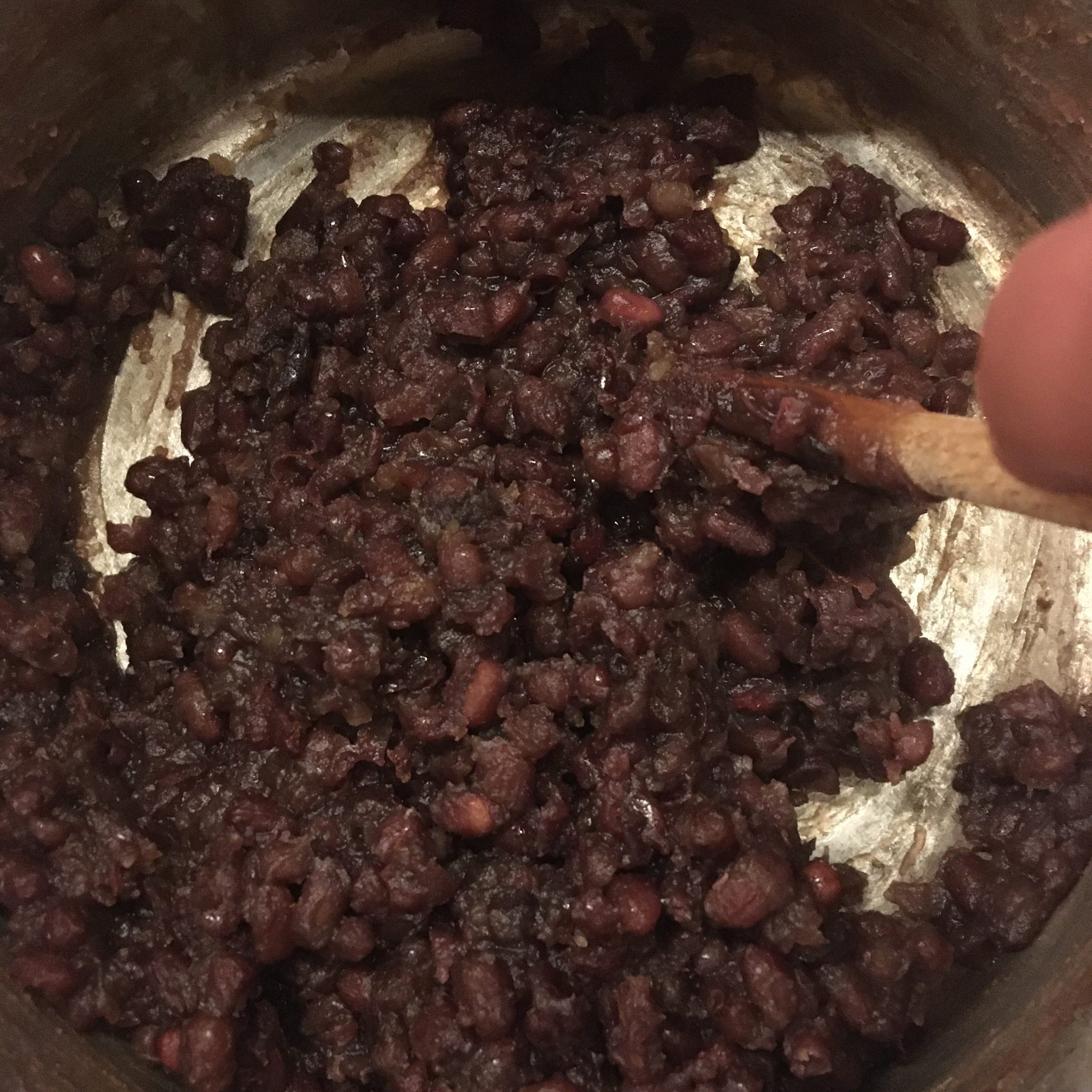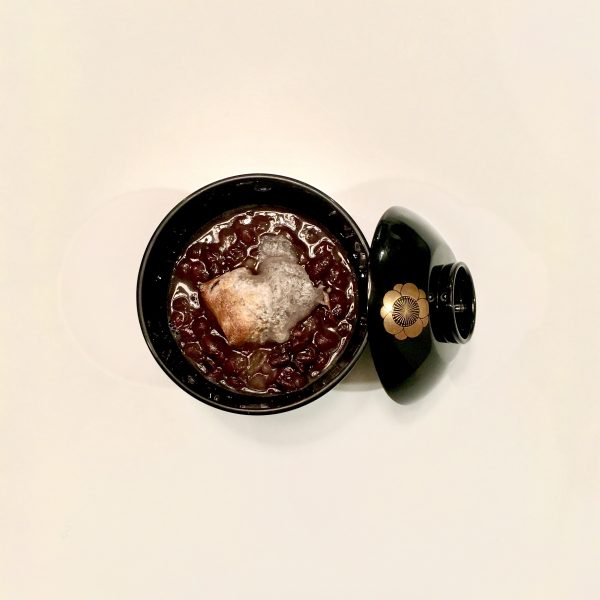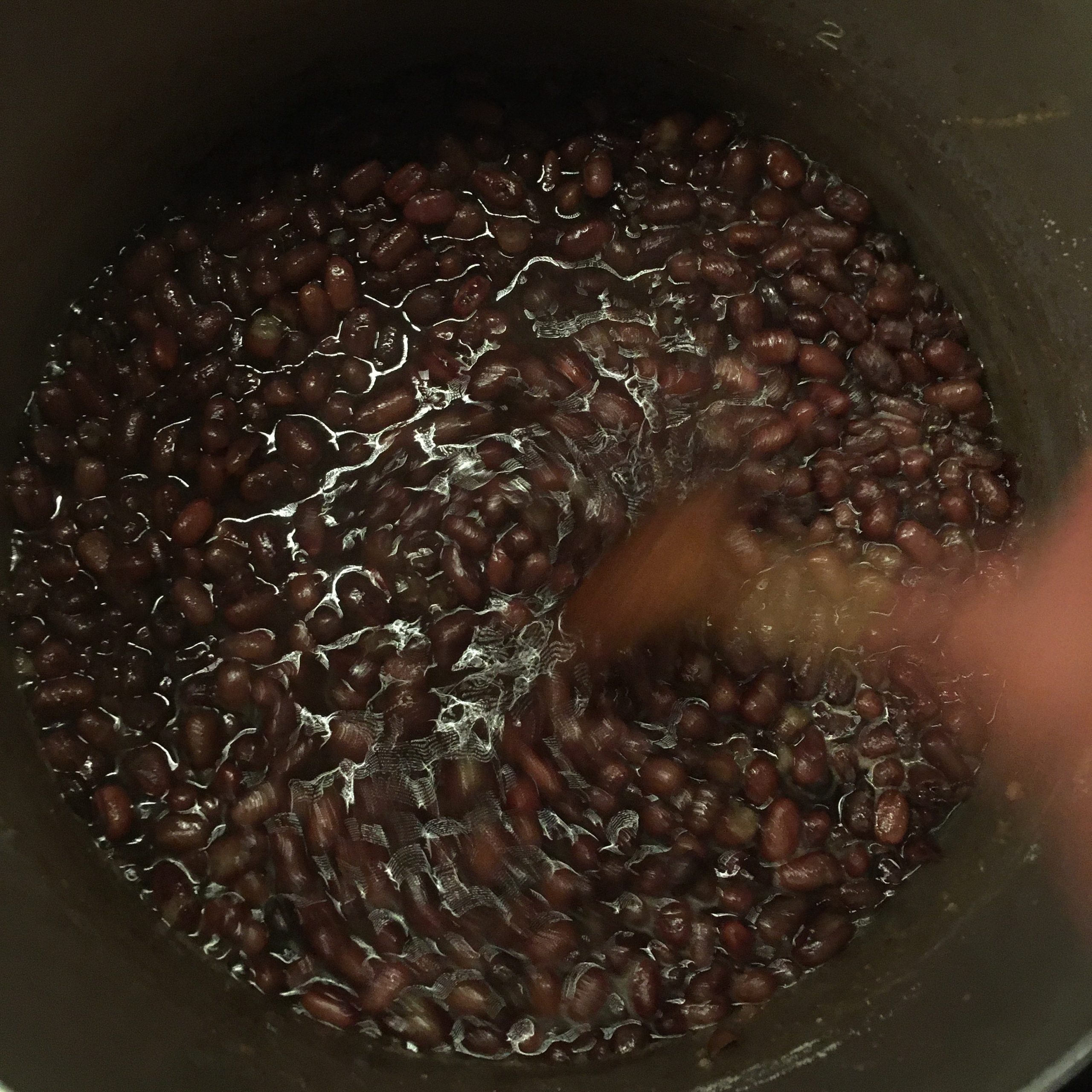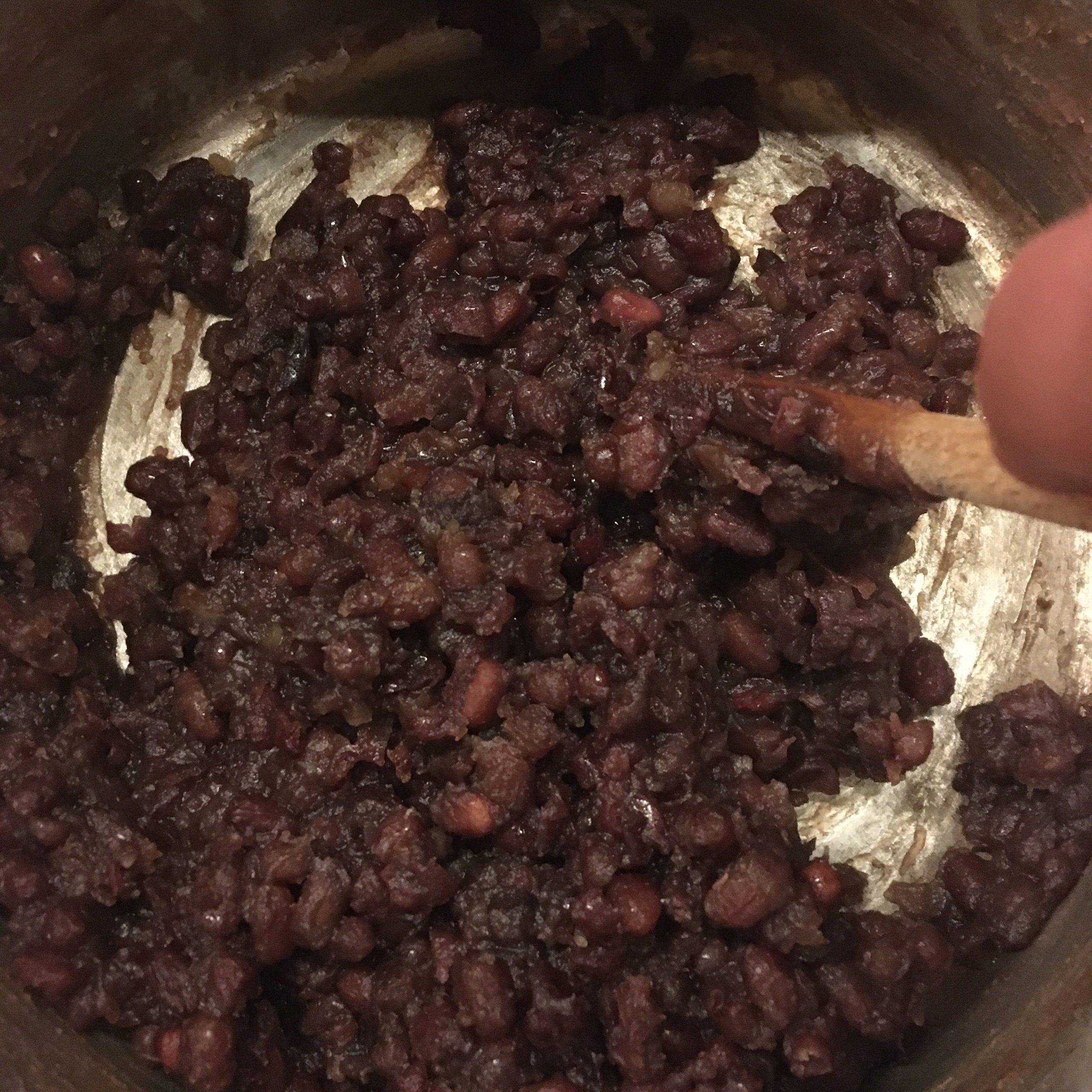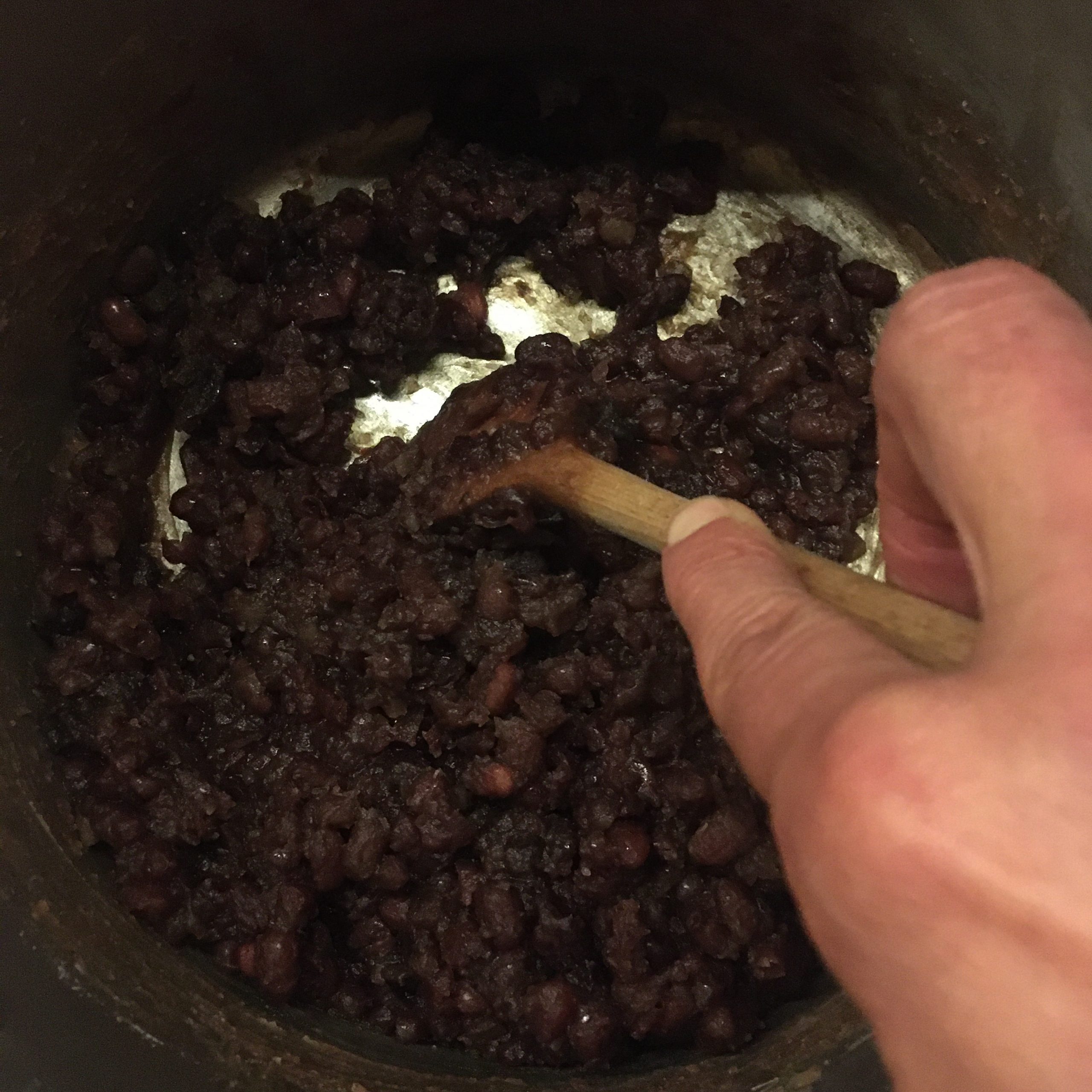I hesitated in doing an adzuki week but thought I would come dry of ideas quickly except from the many sweets… but we don’t eat so many. But discovering more and more recipes, maybe I should have had… another time!
So to change a bit from sweets I wanted a savory recipe to test and when browsing a Japanese cooking website I discovered recently I was immediately convinced that it was a perfect recipe for me: brown rice, sweet potato and adzuki! The simplicity of the ingredients, the seasonality of sweet potatoes 🍠 and the timeliness of me buying and cooking adzuki for the first time. (Really!! Can you imagine it took me 16 years to buy dry adzuki and cook with them!!!!)
The most common and popular recipe of savory adzuki is probably sekihan 赤飯 or literally red rice. The rice used for this preparation is usually mochi rice (sticky rice). It is served topped with black sesame and salt. It is often served for special occasions, but I think the most often I have had it was in bento bought in Tokyo or Ueno station… so for me it’s associated with train travel! 😉 That could still count as special occasions, more now that we haven’t traveled for a year, neither plane nor train… As I don’t buy normally mochi rice (but that too may change soon…) this option of recipe was excluded. Of course using regular Japanese rice would work too by slightly steaming longer… but the idea of adding sweet potatoes was just too tempting, I love sweet potatoes so much!!! So here is the recipe, easy as can be and each ingredient perfectly balanced and the flavors harmoniously enhanced. You can replace the brown rice with white rice, but it will change the texture balance of the overall. Taste will still be ok of course!
Sweet potato and adzuki rice (2 servings)
- 1go (150g) of brown rice
- 10-15g of dry adzuki
- 1 sweet potato (not a big one!)
- a pinch of salt
- a pinch of sesame seeds
Rince the adzuki, set in a pan (that can be used for cooking the rice as well, so non sticky is nice), and cover with 1.5cm of water, bring to a boil and boil at medium heat for 5min. Wash and dice the sweet potato. Add the brown rice and the sweet potato and the salt to the adzuki pan, stir a bit and cover with water to obtain enough liquid to cook the brown rice (that will depend on your pan, your cooking range and the lid you are using. I usually add water to double the height in the pan, plus a bit for brown rice, but I do every thing about). Cook under a lid at low heat until the liquid is all absorbed and the rice is soft. Serve and top with a bit of sesame seeds.
